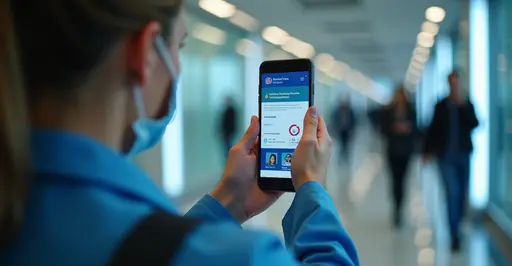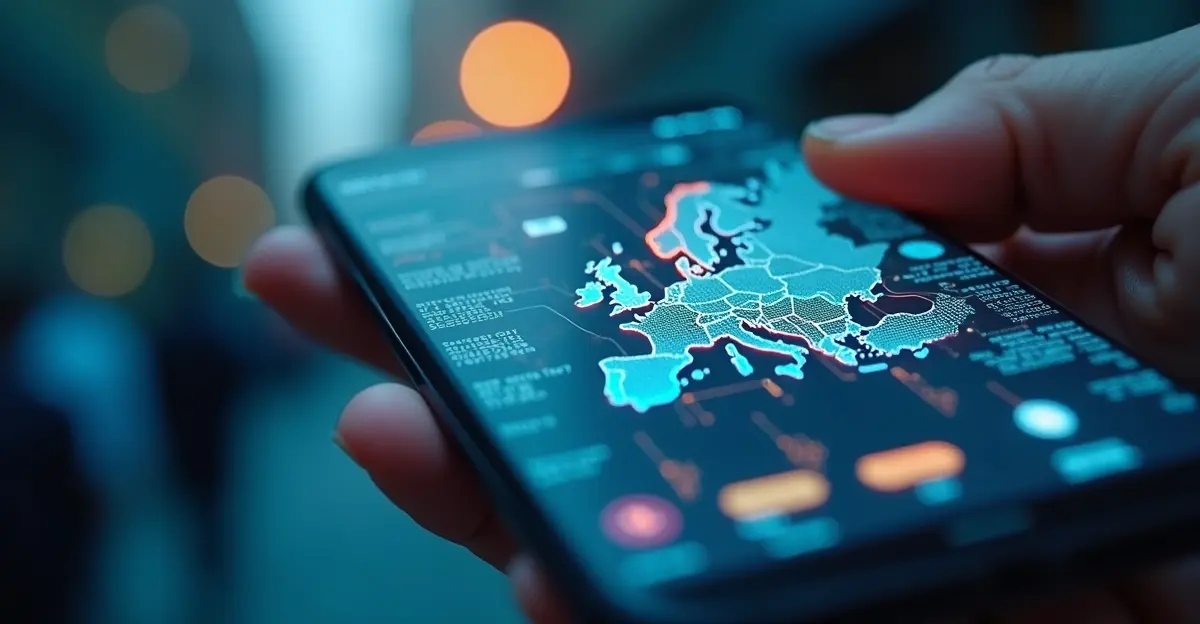Bio-passports and digital health credentials are transforming international travel in 2025. The EU's new Entry/Exit System replaces passport stamps with biometric registration, while digital health passes integrate vaccination records. These technologies enhance security and convenience while raising privacy considerations.

The Digital Transformation of Border Control
International travel is undergoing a revolutionary transformation as bio-passports and digital health credentials become central to border security policies worldwide. The European Union's new Entry/Exit System (EES), which launched on October 12, 2025, represents a major step toward this future, replacing traditional passport stamping with automated biometric registration for non-EU visitors.
'We're witnessing the most significant change in border management since the introduction of machine-readable passports,' says Dr. Elena Rodriguez, a border security expert at the International Civil Aviation Organization. 'Digital credentials offer unprecedented security while making travel more convenient for legitimate passengers.'
How Bio-Passports Work
Bio-passports, also known as electronic or digital passports, contain embedded microprocessor chips that store biometric information including facial recognition data, fingerprints, and iris scans. These contactless smart cards use advanced encryption and public key infrastructure to authenticate the holder's identity, making them extremely difficult to forge. The technology follows International Civil Aviation Organization (ICAO) standards that ensure global interoperability.
When travelers approach border control, automated systems read the chip data and compare it against live biometric scans. This process takes seconds rather than minutes, significantly reducing wait times at airports and border crossings. The EU's EES system, for instance, captures facial images and four fingerprints from non-EU nationals during their first entry, creating a digital record valid for three years.
Health Credentials Integration
The COVID-19 pandemic accelerated the integration of health information into travel documents. While vaccination requirements vary by destination, digital health credentials are becoming standardized through initiatives like the International Certificate of Vaccination or Prophylaxis (ICVP), commonly known as the 'yellow card.'
'The future isn't just about proving who you are, but also demonstrating your health status in a secure, verifiable way,' explains Maria Chen, director of digital innovation at the World Health Organization. 'We're working toward global standards that protect privacy while ensuring public health safety.'
Countries including Australia, South Korea, and Finland are testing digital health passport apps that integrate vaccination records with biometric identification. These systems use QR codes and blockchain technology to create tamper-proof health certificates that border officials can verify instantly.
Global Implementation Timeline
2025 marks a pivotal year for digital border systems. Beyond the EU's EES, several other significant changes are taking effect:
- REAL ID becomes mandatory for domestic US flights starting May 7, 2025
- The UK's Electronic Travel Authorization (ETA) system launched January 8, 2025
- The European Travel Information and Authorisation System (ETIAS) is expected to launch in late 2026
- Digital passport pilot programs are expanding in the US, UK, and Australia
These systems work together to create layered security while streamlining the travel experience. The EU's six-month transition period for EES implementation means travelers should expect some variability in processing times until the system becomes fully operational by April 2026.
Privacy and Security Considerations
While digital credentials offer clear benefits, they also raise important privacy concerns. Bio-passports incorporate multiple protection mechanisms including Basic Access Control (BAC) that encrypts communication between the chip and reader, and Passive Authentication (PA) that detects data tampering.
'We must balance security with fundamental rights,' warns privacy advocate James Wilson of Digital Rights Watch. 'Travelers need assurance that their biometric and health data won't be misused or stored indefinitely.'
The EU's General Data Protection Regulation (GDPR) provides strong safeguards for EES data, which is typically retained for three years after a traveler's last exit. Similar protections are being developed in other regions as digital border systems expand.
The Road Ahead
Industry experts predict that within 2-5 years, digital passports will become the global standard. Physical documents will remain as backups during the transition, but the convenience and security of digital credentials are driving rapid adoption.
'We're moving toward a future where your phone becomes your passport,' says tech analyst Sarah Johnson. 'The infrastructure is falling into place, and travelers are ready for the change after experiencing digital health passes during the pandemic.'
As biometric technology advances and global standards solidify, bio-passports and digital health credentials will redefine international travel, making borders more secure while reducing friction for legitimate travelers. The transformation happening in 2025 sets the stage for this new era of smart, connected border management.

 Nederlands
Nederlands
 English
English
 Deutsch
Deutsch
 Français
Français
 Español
Español
 Português
Português









